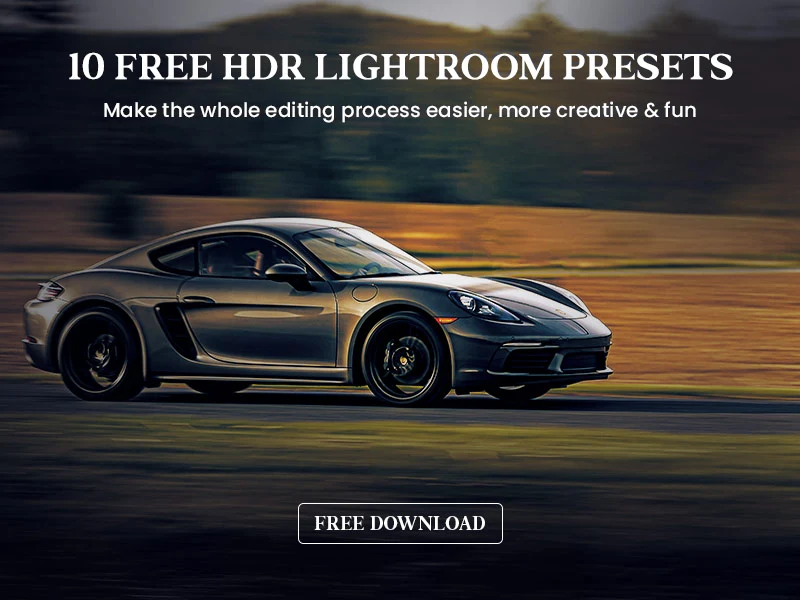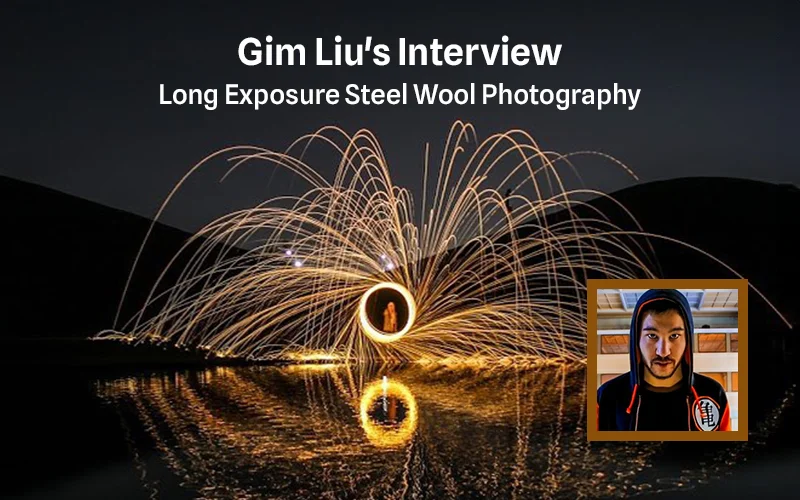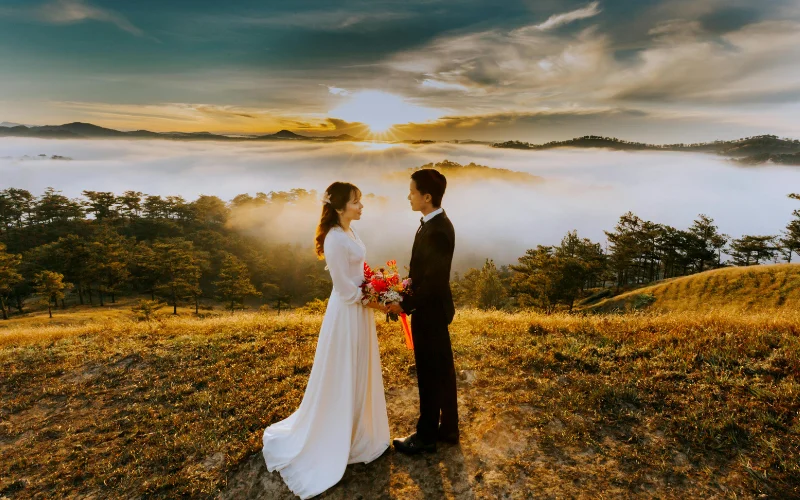After looking at Los Angeles photographer Ryan Schude’s images, you’ll immediately notice his film and literature influences. You’ll see that the images clicked by Ryan Schude more than the document. They tell stories.
In fact, some of his images could easily fit in any Wes Anderson retrospective — they’re that precise. Although Ryan Schude loves shooting documentary-style portraits and street photography, these storytelling images are made from (and the focus of this interview will be on) these carefully planned productions.
Productions of the big Hollywood kind, large, filled with intricate duties, and requiring creatively designed sets, lights, and many, many actors.
Ryan Schude makes photographs that capture a story already in motion, pausing a moment from large-scale — like any film or novel.
They are both sprawling and precise. Built from hand and using visuals to convey its point, they’re also like those panoramas you made as a kid except his are professional, beautiful, and unlike anything you could ever achieve alone.
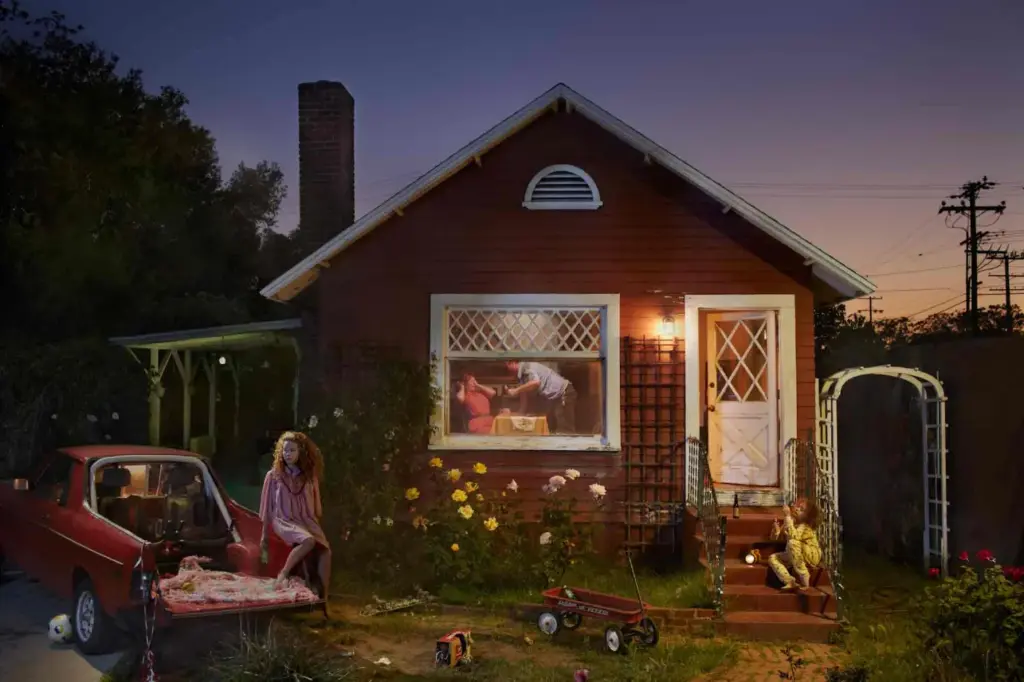
In this interview, Ryan Schude talks about how he got his start in photography, reveals how Los Angeles has influenced his work and explains how he usually begins and finishes these large-scale photographs.
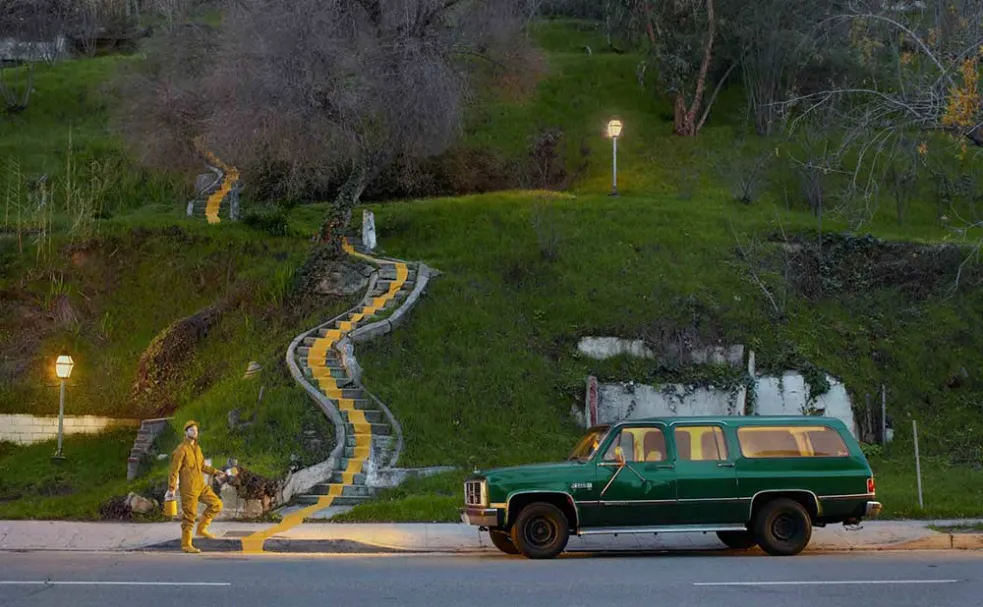
Q1. I love how intricate your photography is. How did you get your start? How would you describe your work?
Ans. There are two totally different styles of work that I am currently exploring.
One is the staged, narrative, tableau which are large productions shot at carefully planned locations or sets and using actors cast for specific roles in order to tell multiple stories within one frame.
The other is a much simpler, documentary style of portraits and street photography that was the basis of what I’ve always shot from the beginning.
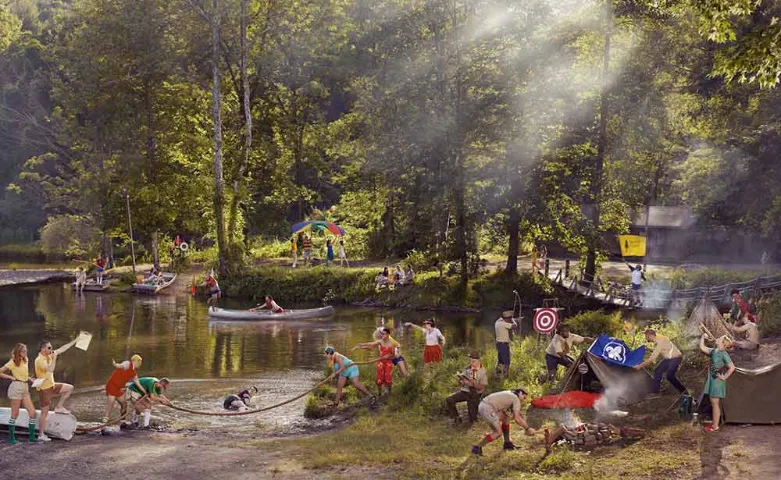
Q2. There are many levels of design to your work. You use light to direct attention and build story. Could you explain your approach to set design? What influenced you toward this direction?
Ans. The approach is unique to each photo. Sometimes a location can influence the story being told while other times there is a concept first and then we need to either build a set or find a location that works for that particular idea.
Influences come from all over the place, many are variations on things I’ve seen or experienced. Film and literature also play a huge role.
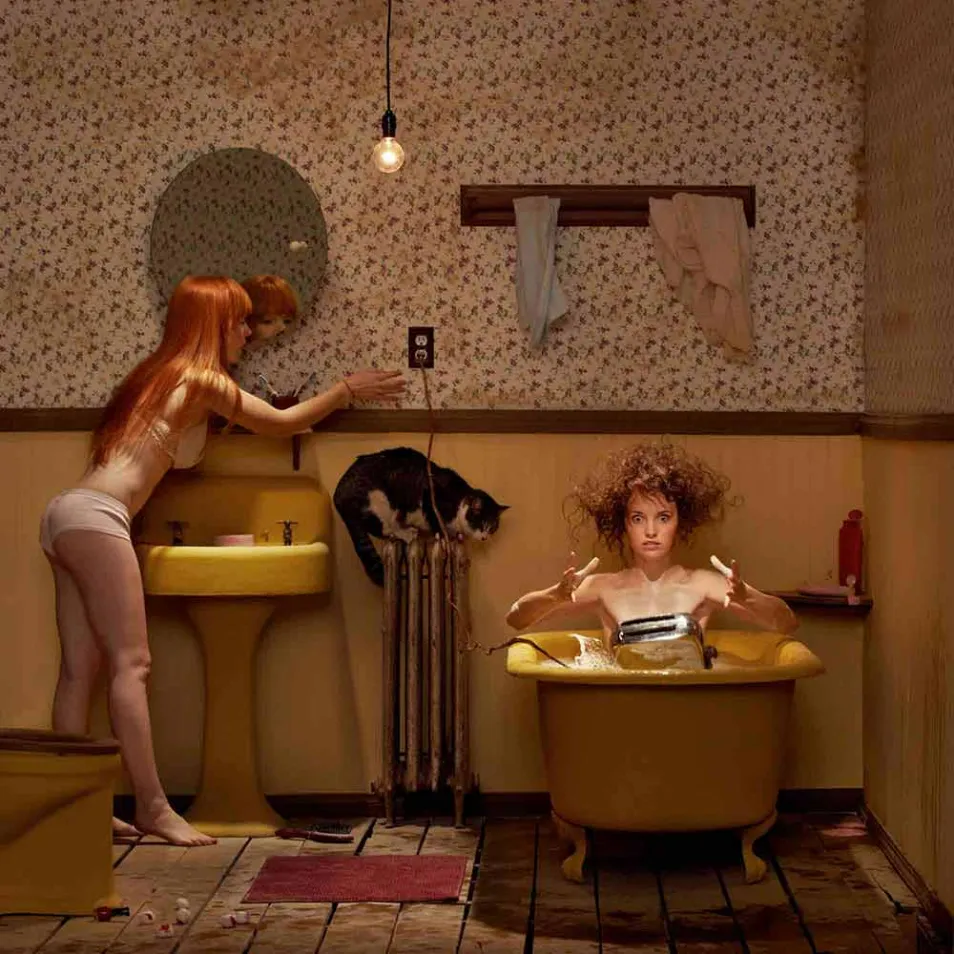
Q3. What’s your pre-production process like? How do you first develop the story/setup?
Ans. Again, it’s different every time. It might be easier to talk about specific photos and explain their backstory.
Let’s take this one of Lauren Randolph in the tub with the toaster for example. She is a photographer and at the time had just finished a project where she shot a self-portrait everyday for a year straight.
I was imagining how burnt out she must have been on the whole process and wanted to take a portrait of her that illustrated this.
I got it in my head that she needed to be throwing in the towel, so to speak, by electrocuting herself in the bathtub.
Then began the search for the perfect bathroom. After scouting a few locations that fell way short of my expectations, I decided to build the set in the studio instead.
Working alongside my brother Collins who has done production design for many of my photos, we bought or rented every item in that photo specifically for a pre-determined style.
We then built the set according to a hilariously bad sketch I made outlining what I envisioned for the composition.
Adding Lauren’s cat and sister in the photo made sense considering how much of a part they played in her series as well.
The backstory isn’t necessarily important to viewing the image as the toaster is an obvious one liner for what she is doing here but I do like the ambiguity in Caitlin’s action as many cannot tell whether she is trying to save her or aid in the demise.
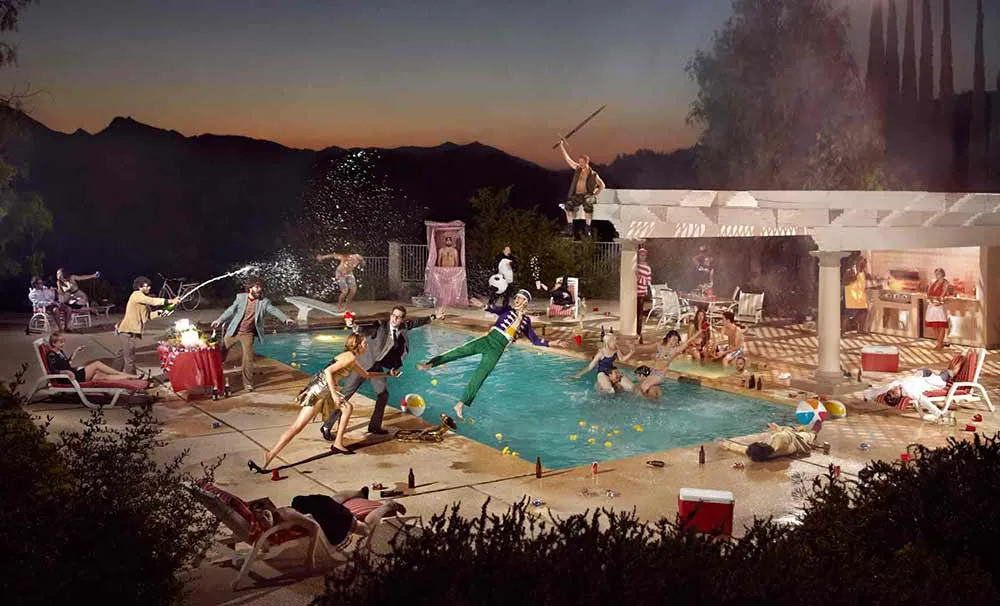
Q4. One my favorites is #2 in Book 1. There’s so many details to keep the eye’s interest, and the sunset color is gorgeous. Could you explain how it was completed from start to finish?
Ans. That is a collaboration with Lauren Randolph for a creative retreat we attended called Phoot Camp in 2010.
We knew we were staying at that house and wanted to make a group portrait of all the members telling the classic story of high school kids throwing a party when their parents went out of town.
Each person dressed in their favorite teenage stereotype and the scene was constructed around the pool.
Everything is shot in camera at the same time. Ideally it would have been one single frame to ensure that it looks as natural as possible. In the end, there are maybe 12 different frames composited together shot over the course of an hour or so.
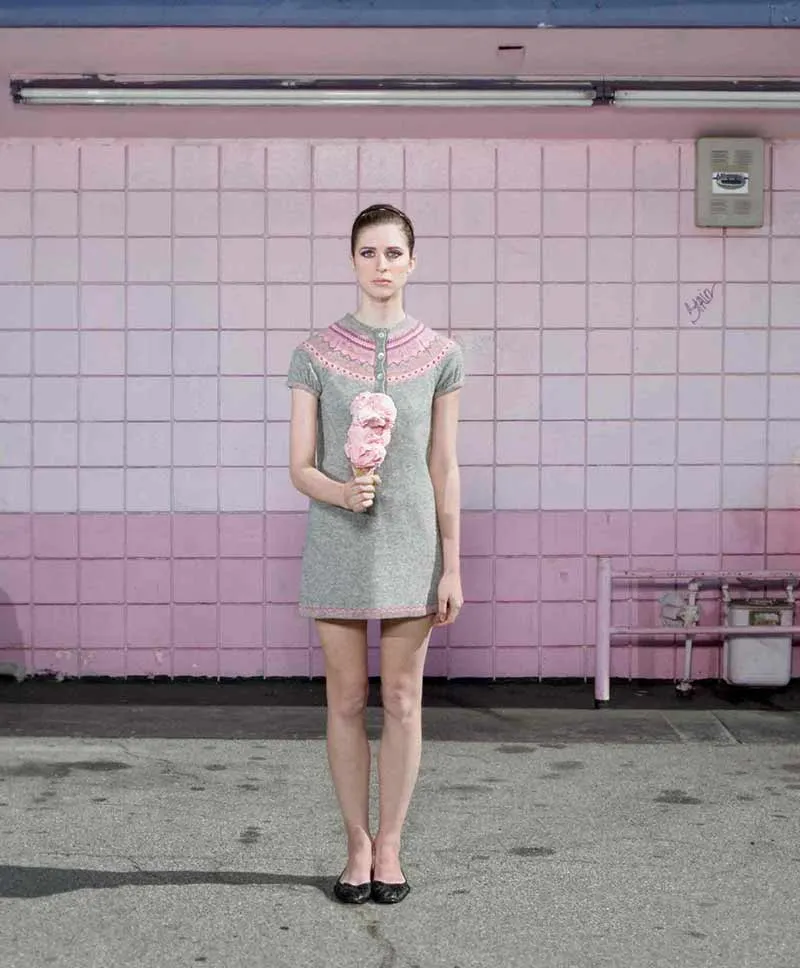
Q5. Your portraits are also very much about set design and color. They’re well thought out. #3 in Book 2 is a great example. Did you find this location first then build the portrait around it? How do you usually plan a portrait?
Ans. That particular image was part of a series that matched a specific prop with a matching wall behind the subject.
The locations came first, driving around Los Angeles and finding places I wanted to shoot at and then coming up with props appropriate for each.
Again, this is not a consistent process for all portraits, it goes both ways where the subject can inspire the location or vice versa.
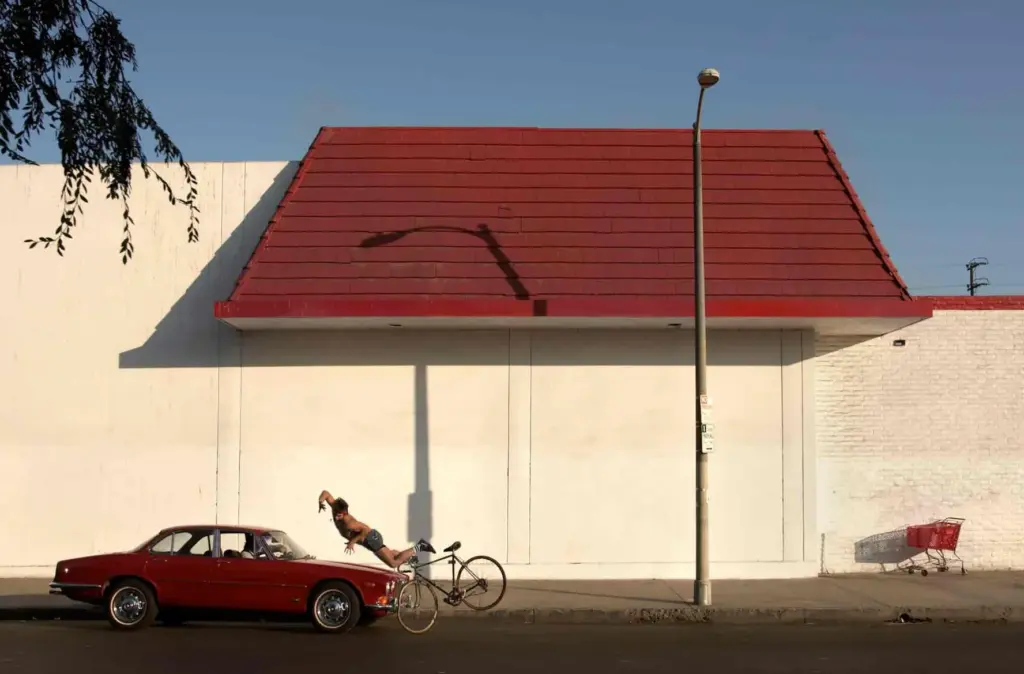
Q6. #5 in Book 2 is one of my favorite images of yours. It showcases your careful eye toward matching colors and finding the right moment to capture. Why did you think it was important to make sure the car, the roof, and the car match?
Ans. Your eye moves around the photo jumping from each red object while the subjects are frozen in their own movement. It all works together to create a little dance in the frame.
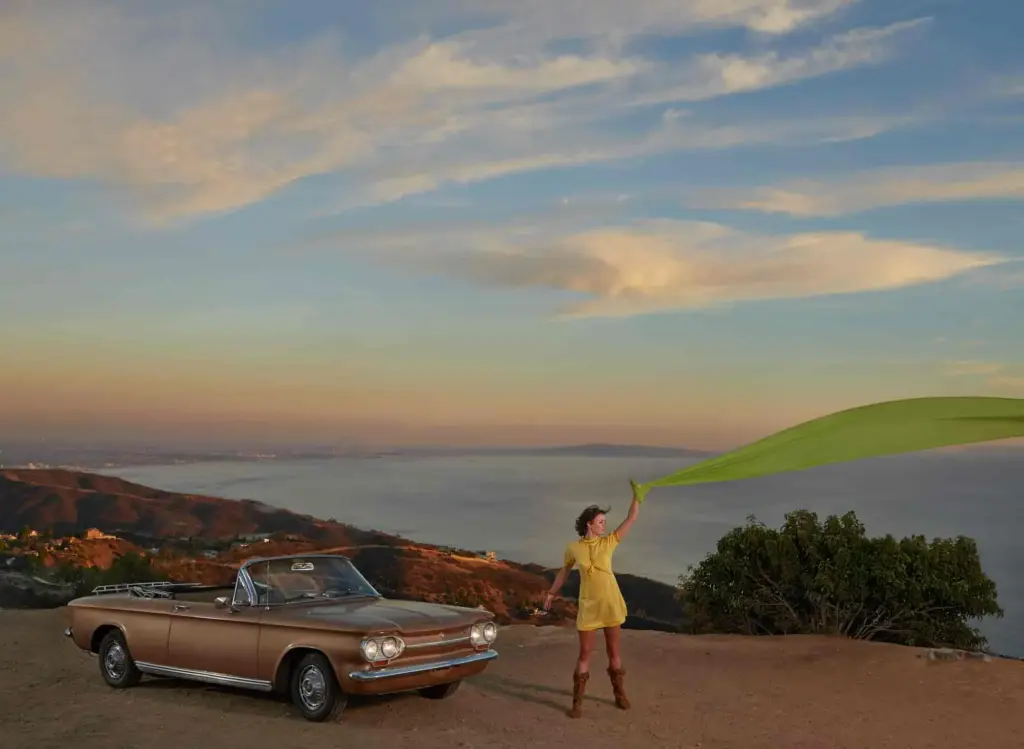
Q7. What principles do you think other photographers could learn from your work about telling a story with details like color and composition?
Ans. Maybe not to overuse a gimmick. Keep it subtle enough so that it isn’t jumping out at the viewer as a one liner but an afterthought that compliments the story as opposed to dominating it.
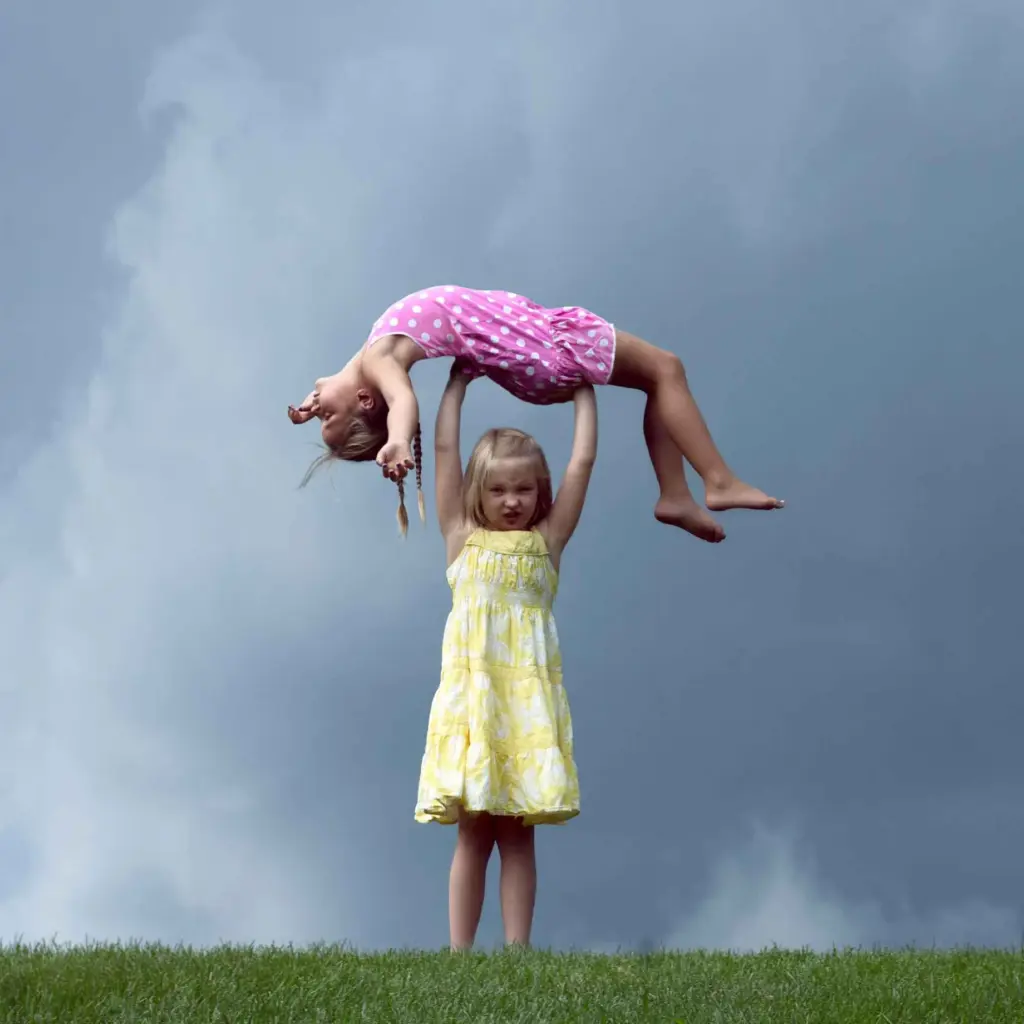
Q8. You’re a Los Angeles based photographer and photograph many locations within the city. What advantages do you think this city provides to photographers? Any organizations other photographers should know about?
Ans. Before living here I wasn’t a fan at all. At first glance it isn’t a classically pretty city but it is fairly diverse and vast enough to keep you exploring nonstop. You can go from the beach to the mountains to the desert in the same day.
Every resource you could ask for is here to help you make work, the most important being the troves of creative people surrounding you. The biggest reason I may never leave is because of my immediate community full of people hungry to make great work.
Be sure to check out all the work of Ryan Schude on his website and tumblr!

